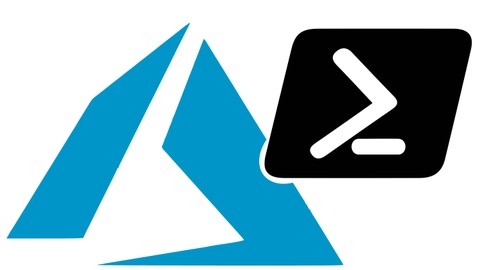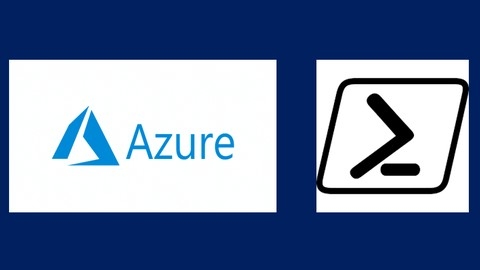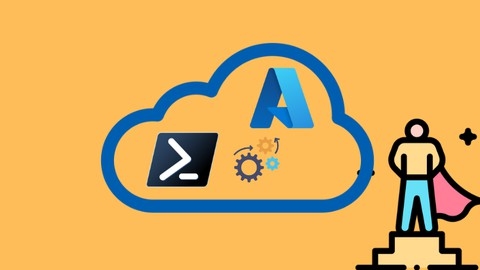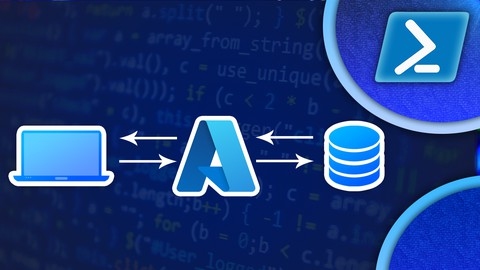Azure PowerShell is a powerful tool that allows you to automate and manage your Azure resources with ease.
By mastering Azure PowerShell, you can streamline your cloud workflows, deploy resources efficiently, and manage your Azure environment with greater control and speed.
This knowledge is highly valuable for anyone working with Azure, from system administrators and developers to cloud architects and DevOps engineers.
Finding the right Azure PowerShell course on Udemy can be a daunting task, with so many options available.
You’re looking for a program that’s comprehensive, engaging, and taught by experts, but also fits your learning style and goals.
For the best Azure PowerShell course overall on Udemy, we recommend Mastering Azure PowerShell.
This program is a comprehensive guide that covers everything from the fundamentals of Azure PowerShell to advanced automation techniques.
The course features hands-on labs, real-world examples, and clear explanations that make learning enjoyable and effective.
You’ll gain the skills needed to confidently automate and manage your Azure infrastructure.
While this is our top pick, there are other great options available.
Keep reading to discover more recommendations for beginners, intermediate learners, and experts, as well as courses focusing on specific Azure PowerShell modules and techniques.
Mastering Azure PowerShell
This course equips you with the skills you need to confidently navigate the world of Azure automation.
You’ll start with a strong foundation in PowerShell, mastering core concepts like cmdlets, variables, data types, and functions.
From there, you’ll delve into Azure, learning how to install Azure PowerShell and create your free account.
The course is packed with hands-on labs, giving you the opportunity to create resource groups, storage accounts, and virtual machines – all using PowerShell.
The depth of this course is evident in its detailed coverage of Azure Virtual Machines.
You’ll learn how to create, resize, and delete them, and explore best practices for high availability through availability sets and zones.
Security is paramount, and you’ll gain expertise in utilizing Azure Bastion, Key Vault, and firewalls to safeguard your resources.
The syllabus extends beyond virtual machines, covering essential services like web apps and SQL databases.
You’ll learn how to create, deploy, and manage these services, and even explore the intricacies of Azure networking, including load balancers, traffic managers, and application gateways.
Finally, the course concludes with a focus on monitoring, governance, and Azure Functions, empowering you to create alerts, manage resource tags, and leverage Azure Functions for automated tasks and seamless integration with other services.
This course offers a valuable and practical approach to mastering Azure PowerShell.
You’ll leave with a robust set of skills ready to manage and automate your Azure environment.
Creating and Managing Azure Virtual Machines with PowerShell
If you’re looking to master Azure Virtual Machines and harness the power of PowerShell, this course is an excellent starting point.
It’s a comprehensive guide that takes you from the basics of installing and configuring PowerShellGet and the Azure PowerShell module, to confidently building, configuring, and managing your own VMs.
You’ll learn how to connect to your Azure account via PowerShell and delve into key areas like deploying virtual machines from Marketplace Images, creating custom data disks, and resizing and managing the power states of your VMs.
The course covers essential management tasks, including stopping, starting, and deleting VMs and resource groups.
You’ll also explore advanced techniques like taking snapshots of your VMs and deploying VMs from those snapshots.
Each section includes quizzes to solidify your understanding and reinforce your learning.
You’ll walk away with the skills and confidence to confidently manage Azure Virtual Machines using PowerShell.
The course culminates with a hands-on exercise where you’ll clean up your VMLab resource group, leaving you with a solid foundation for future projects.
Creating & Managing Azure VMs with the AZ PowerShell Module
You’ll delve into the core functionalities of the AZ PowerShell Module, learning to install it, securely connect to Azure, and build your first virtual machine.
Beyond the basics, this course takes you deeper.
You’ll learn to create custom images, essentially blueprints for deploying identical VMs, ensuring consistency and speed in your cloud infrastructure.
This includes prepping VMs for imaging, creating the image itself, and deploying new VMs directly from this image.
Data storage is a crucial aspect of any VM deployment, and this course equips you with the knowledge to handle it effectively.
You’ll learn to create and attach data disks to your VMs, providing flexible storage solutions for your applications.
The course also demonstrates how to resize Windows VMs using PowerShell, a valuable skill for optimizing performance and resource allocation.
Beyond VM creation and configuration, the course covers essential management tasks.
You’ll learn to start, stop, and delete VMs, as well as manage related resources and entire resource groups.
A critical aspect of VM management is disaster recovery, and this course introduces you to snapshotting.
You’ll learn to create and configure snapshots, ensuring quick and efficient restoration of your VMs in case of unforeseen issues.
The course further demonstrates how to create new VMs directly from existing snapshots, further streamlining your deployment processes.
This comprehensive approach, combined with practical exercises and real-world examples, makes this course an excellent stepping stone for anyone aiming to become proficient in Azure VM management using PowerShell.
Azure PowerShell on the Cloud
You’ll start by mastering the fundamentals, including installing Azure PowerShell, signing into your subscription, and understanding the powerful AzureRM modules.
Beyond the basics, you’ll delve into key concepts like Azure contexts and learn how to efficiently read, filter, and format output from the various cmdlets.
This foundation lays the groundwork for effectively managing your Azure environment.
The course then guides you through the management of critical Azure services.
You’ll gain hands-on experience with storage resources, learning to create, manipulate, and manage storage accounts, blobs, file shares, tables, and queues.
You’ll also master the creation and management of virtual networks, security groups, and virtual machines, including the implementation of extensions.
Finally, you’ll explore advanced deployment options using Azure PowerShell.
You’ll gain proficiency in working with ARM Templates, learning how to deploy them effectively and even save existing deployments as templates for future automation.
This course equips you with the knowledge and skills to confidently manage your Azure resources, streamline your workflows, and optimize your cloud infrastructure.
Learning Azure Process Automation using PowerShell
You’ll dive into the practical world of Azure Automation, gaining hands-on experience with runbooks and how they can streamline tasks like managing resources and automating deployments.
The course also introduces you to ARM and Azure Bicep, allowing you to explore the world of Infrastructure as Code through practical examples.
You’ll learn how to create ARM templates and then transition to Azure Bicep for more efficient infrastructure management.
Beyond the core concepts, the course also includes a practical demonstration of a Node.js based web storage application called “My Cloud Bucket.”
This provides a real-world scenario for applying your Azure PowerShell knowledge to build a functional application.
The accompanying resource section covers essential PowerShell fundamentals, including execution policies, objects, views, and pipelines, equipping you with a solid foundation for further exploration.
This course offers a well-structured approach to learning Azure PowerShell, catering to both beginners and those seeking to deepen their understanding of advanced concepts.
The practical examples and hands-on exercises provide a valuable learning experience, making this a strong choice for anyone aiming to master Azure PowerShell.
Mastering Azure PowerShell: Automate Azure Administration
This course provides a solid foundation in Azure PowerShell, equipping you with the skills to automate and manage your Azure infrastructure efficiently.
You’ll start by understanding the importance of PowerShell in today’s IT landscape and dive straight into the Azure PowerShell Module (Az Module), learning its intricacies and how it differs from the basic PowerShell.
Get ready to set up your environment, installing PowerShell Core and exploring both Visual Studio Code (VS Code) and PowerShell ISE.
You’ll also learn how to install Azure PowerShell from PSGallery and effectively utilize Azure Cloud Shell for remote management.
Connecting to your Azure tenant and navigating the PowerShell Help Center becomes a breeze as you master commands like Get-Command and Get-Help to efficiently discover and understand the PowerShell commands you need.
You’ll also gain a clear understanding of the Az command structure, making it easier to navigate and find the right command for your tasks.
The course takes you through Azure Resource Group Management, teaching you how to leverage Azure Resource Manager (ARM) to organize your Azure resources effectively.
You’ll create your first resource group and learn the art of managing tags for efficient organization and resource tracking.
Next, you’ll explore Azure Networking, gaining a comprehensive understanding of Azure Virtual Networks (VNets) and creating your own.
You’ll learn to create public and private subnets and delve into the power of Azure Network Security Groups (NSGs) to control network traffic.
You’ll even gain practical experience creating NSG rules and attaching and detaching them from subnets.
Finally, the course covers Azure Virtual Machines (VMs), providing a strong foundation for understanding these powerful cloud computing resources.
You’ll be well-prepared to confidently manage and automate your Azure VMs using PowerShell.
This course is well-structured and comprehensive, covering essential concepts and providing practical hands-on experience.
It will equip you with the skills needed to confidently manage and automate your Azure infrastructure.
Master PowerShell 7 on Microsoft Azure (IaaS)
You’ll quickly dive into the practical aspects of the course, beginning with installation and exploring the fundamentals of working with strings, arrays, and variables.
The course emphasizes building logic using various loops and conditional statements, which are crucial for automating tasks within Azure.
You’ll learn to streamline complex operations, such as creating multiple resources, managing subscriptions, and configuring security settings.
You’ll also delve into more advanced techniques, including parallelizing operations for faster execution, writing reusable functions with parameters, and utilizing the Splatting Method for efficient VM creation.
The course concludes with exploring formatting options and creating user-friendly output, giving you the tools to present your automation results effectively.
Throughout the course, you’ll gain a strong foundation in PowerShell 7, enabling you to confidently manage and automate your Azure resources.
Azure Powershell Step-by-Step
This course provides a solid foundation in managing Azure environments using Azure PowerShell.
You’ll dive right into the core functionalities, starting with the fundamentals of deploying virtual machines and progressing to more advanced operations like creating custom images with Sysprep and managing Azure disks.
The curriculum also delves into essential concepts like High Availability and Load Balancing, equipping you with the knowledge to create Availability Sets to ensure your virtual machines stay operational even in the face of failures.
You’ll learn the ins and outs of load balancing, enabling you to distribute traffic evenly across your VMs for optimal performance.
The hands-on labs are a valuable component of the course, providing practical experience and reinforcing the concepts you’ve learned.
Each lab walks you through real-world scenarios, allowing you to apply your newfound skills.
You’ll be well-equipped to tackle various tasks, from deploying and configuring virtual machines to implementing robust high availability and load balancing strategies.
Deploying your first infrastructure in Azure with Powershell
This course provides a solid foundation in deploying infrastructure in Azure using PowerShell.
You’ll start by getting your environment ready, setting up Visual Studio Code and installing the Azure PowerShell module.
This hands-on approach immediately plunges you into the practical aspects of working with Azure.
You’ll then learn the core concepts of interacting with Azure via PowerShell, beginning with connecting to your account and defining your context.
The course carefully guides you through creating resource groups, the fundamental containers for your Azure resources.
From there, you’ll dive into the real meat of the course – deploying your first Linux virtual machine (VM).
You’ll learn how to check for existing resource groups, create the VM, manage its lifecycle (starting, stopping), and even open ports within the Network Security Group for secure SSH access.
The course also covers resizing your VM and verifying its size, giving you a comprehensive understanding of VM management.
Next, you’ll create a Windows Server VM, opening the RDP port in the NSG for seamless remote connection.
You’ll also gain valuable experience attaching Azure Disks to your VMs, a crucial aspect of storage management.
The course concludes with a practical exploration of report generation using PowerShell.
You’ll learn how to automate report creation, extract detailed information about your Azure resources, and efficiently delete your resource groups.
This final section effectively brings together the concepts you’ve learned throughout the course, highlighting the power of PowerShell in managing your Azure environment.
It provides you with the essential knowledge and skills to confidently manage your Azure resources, setting a strong foundation for further exploration and advanced work within the Azure ecosystem.









